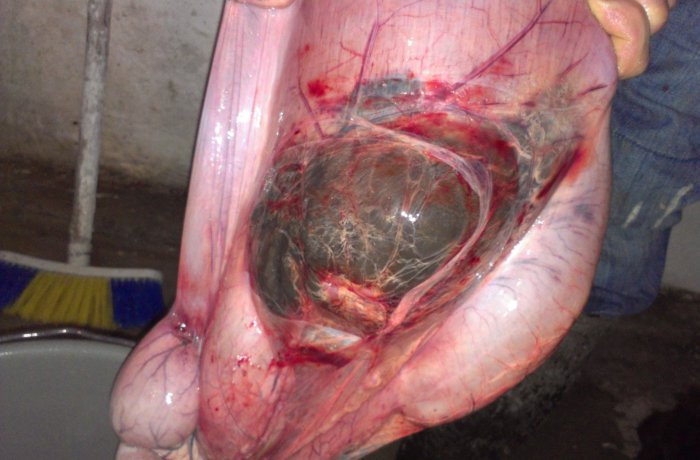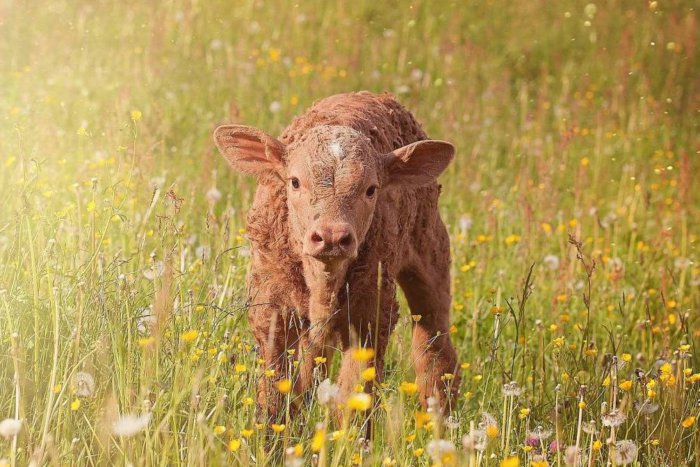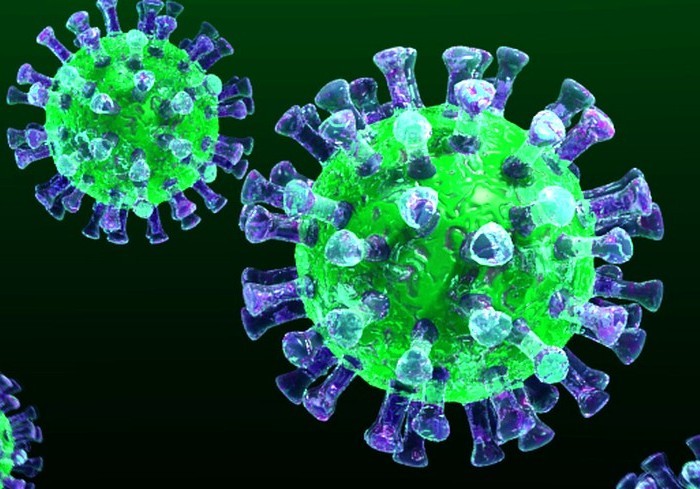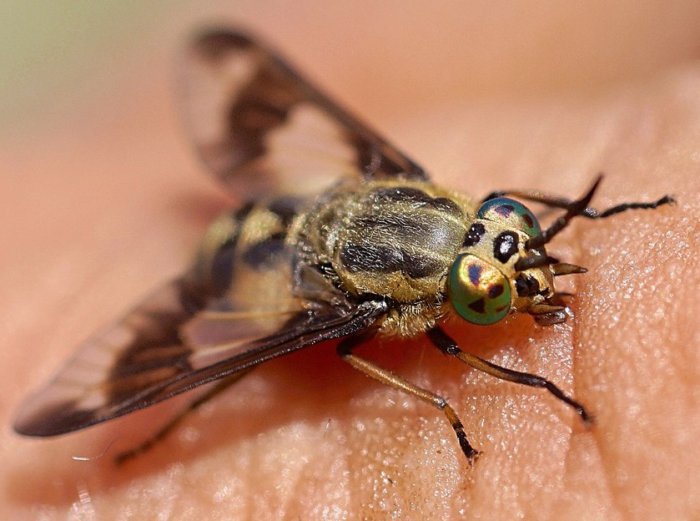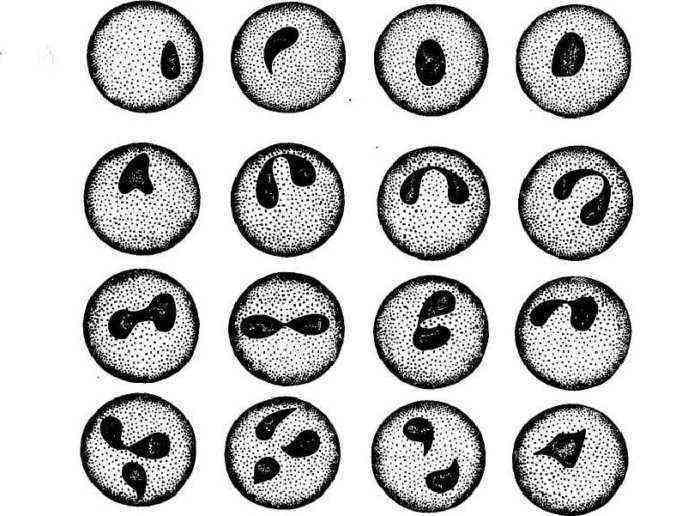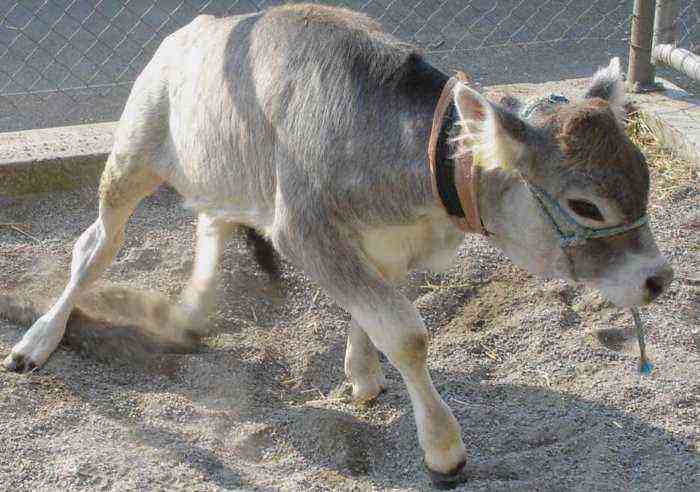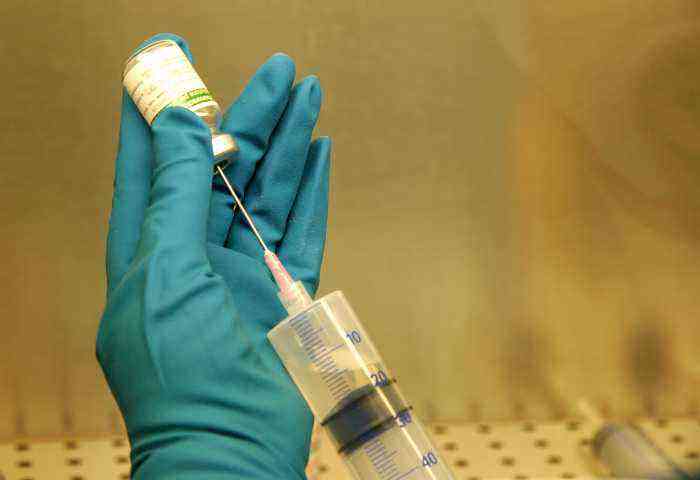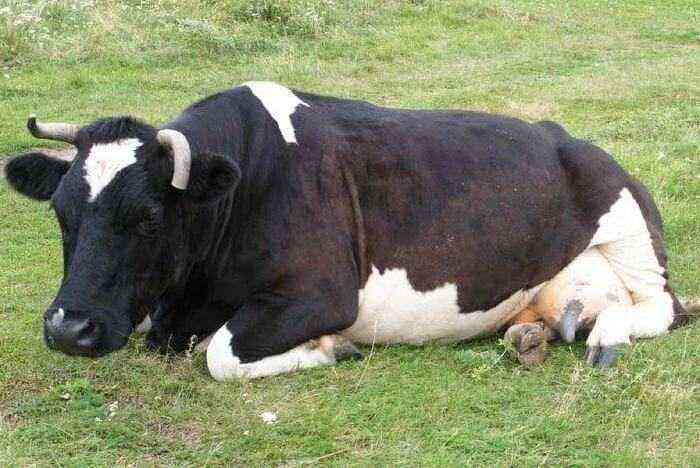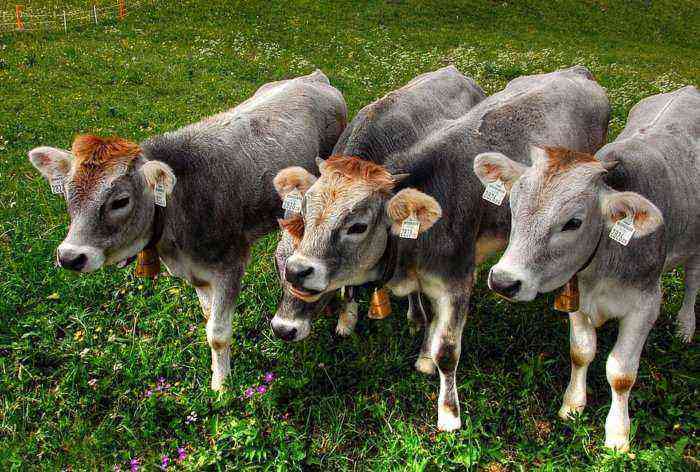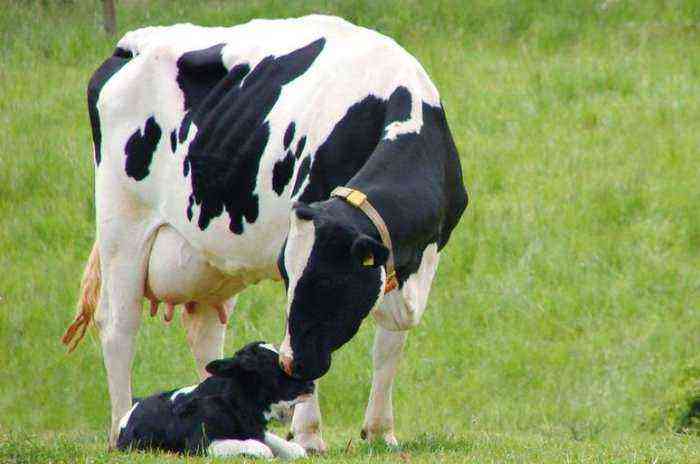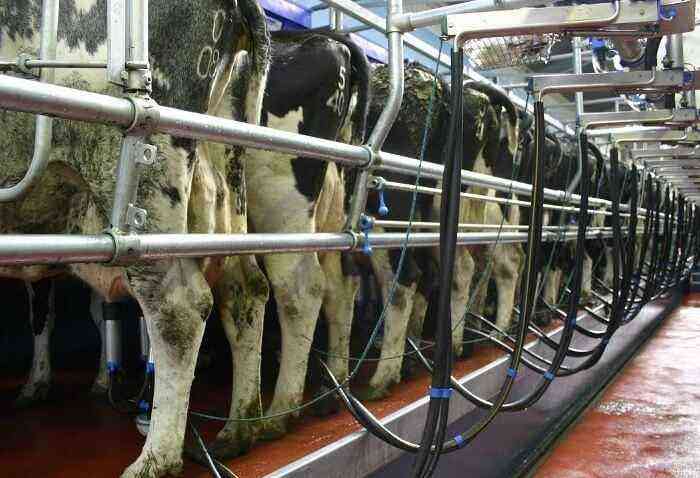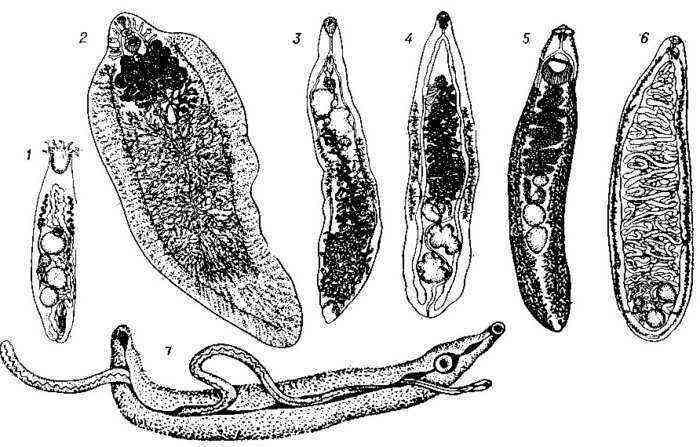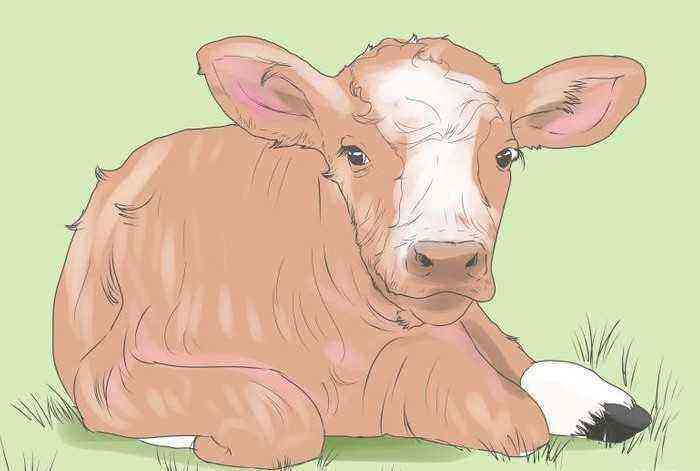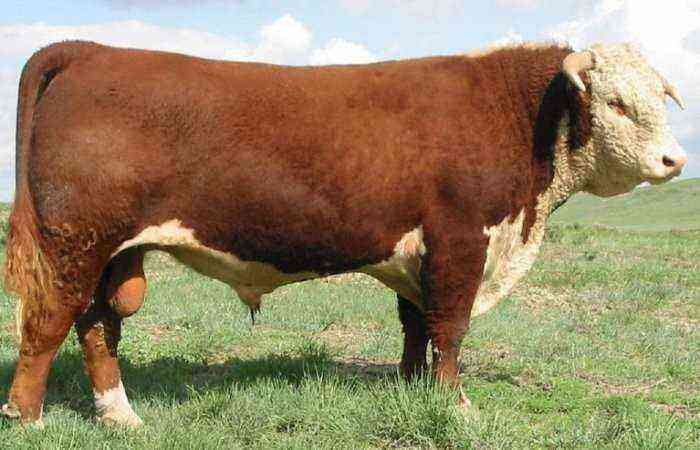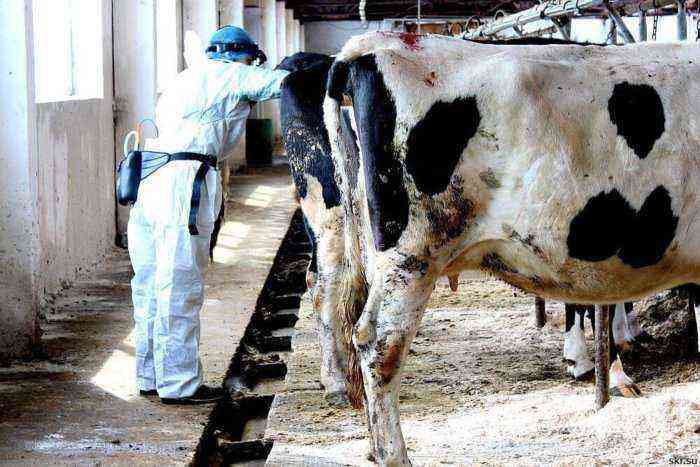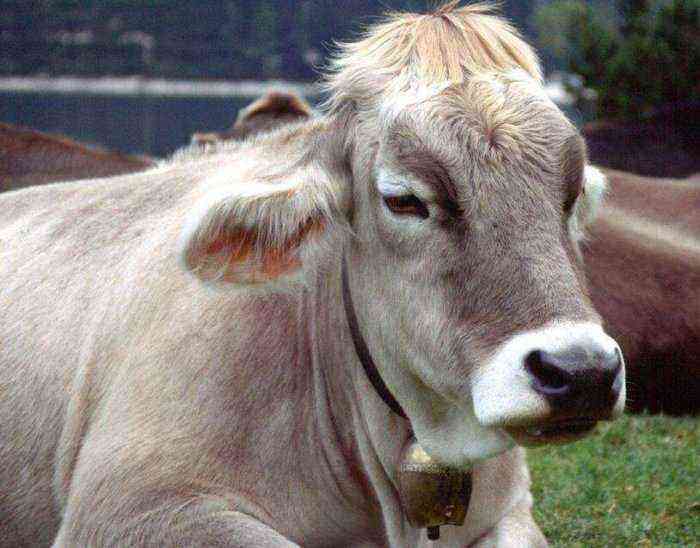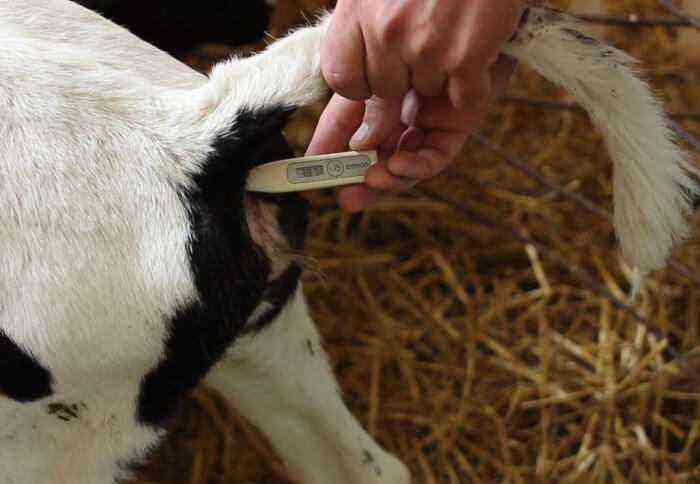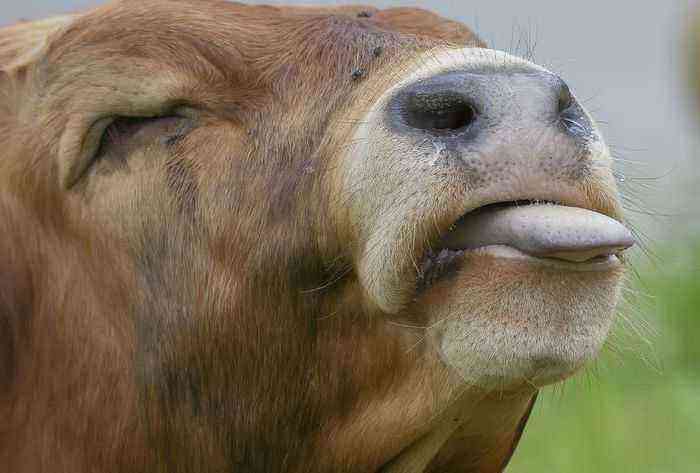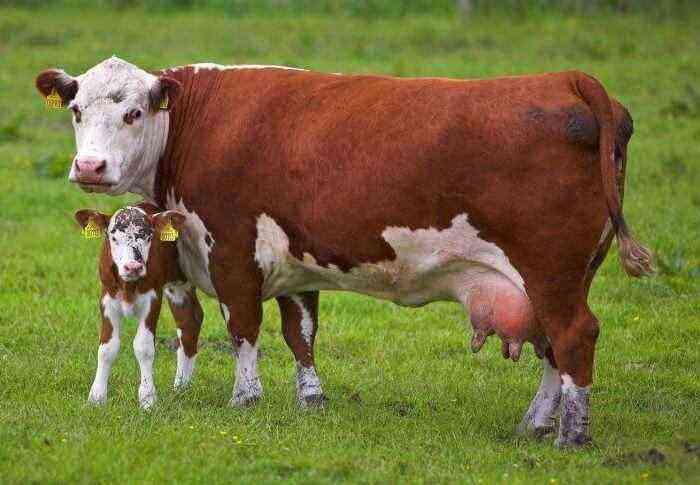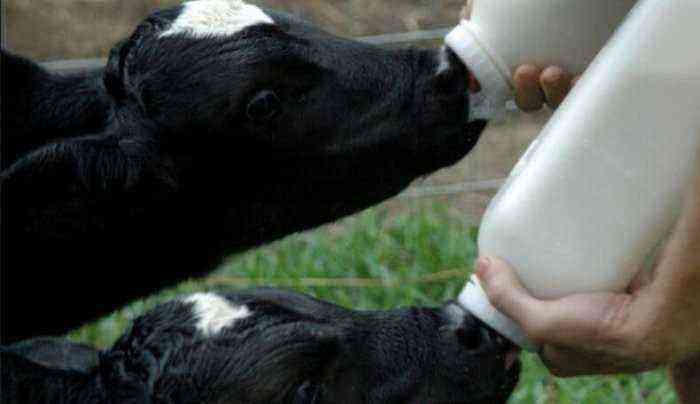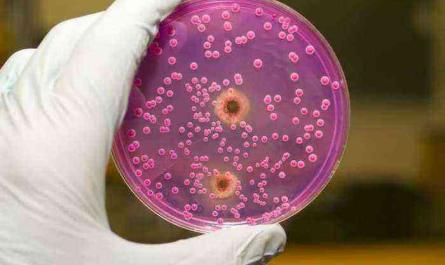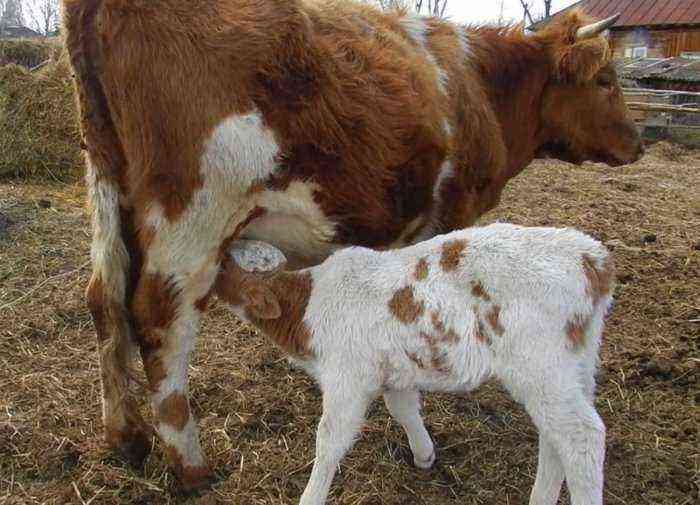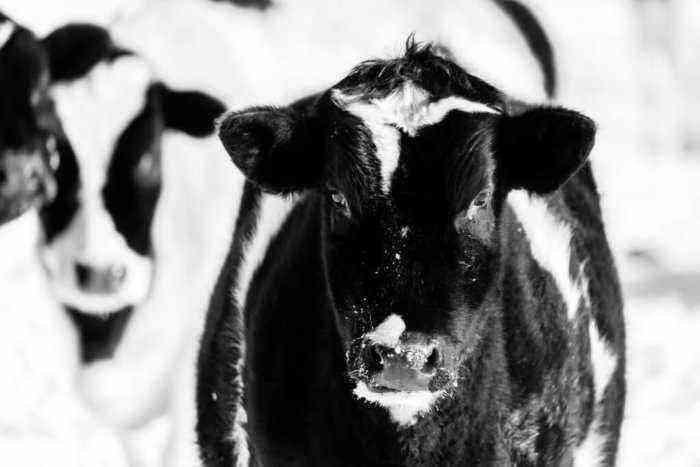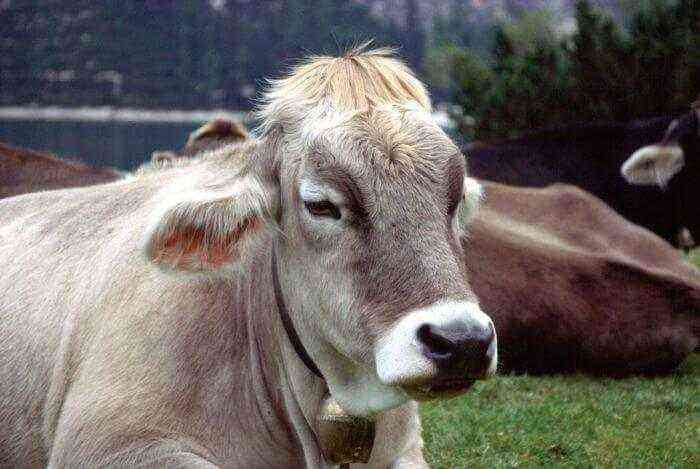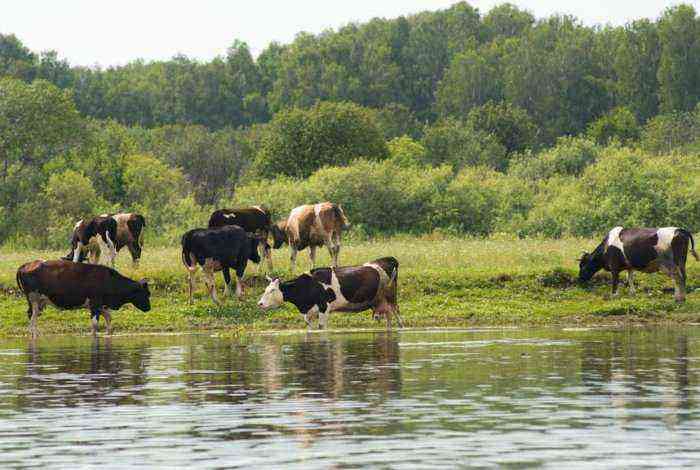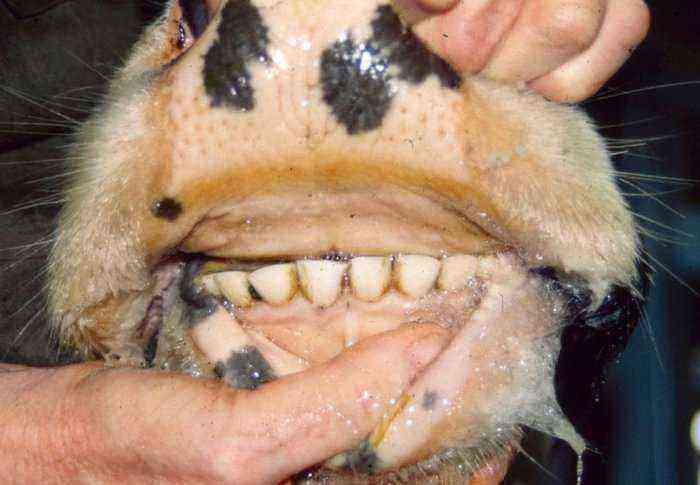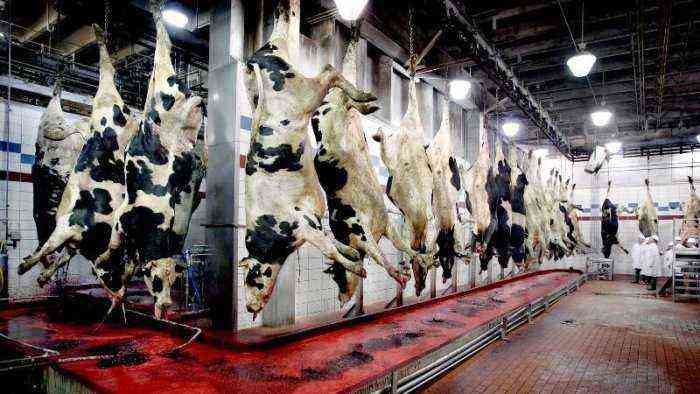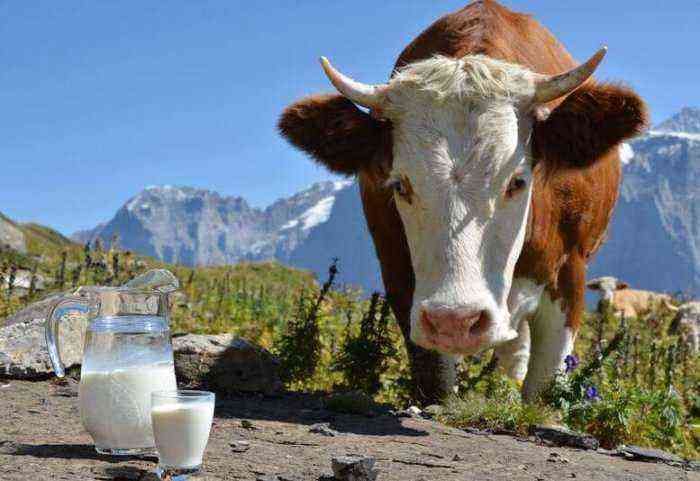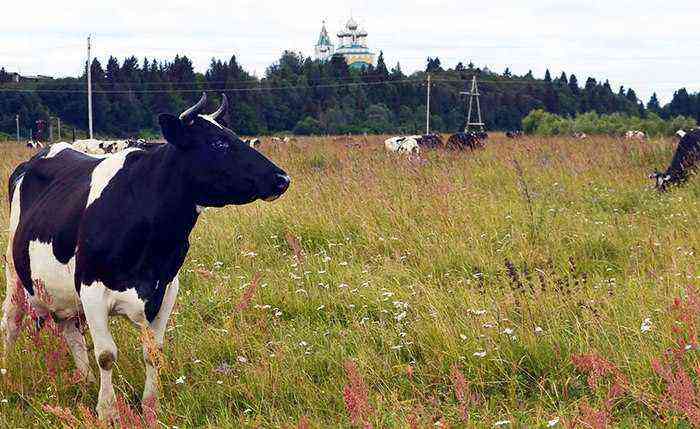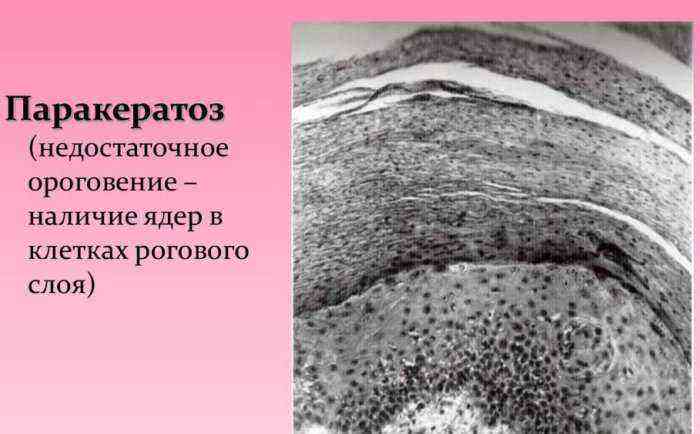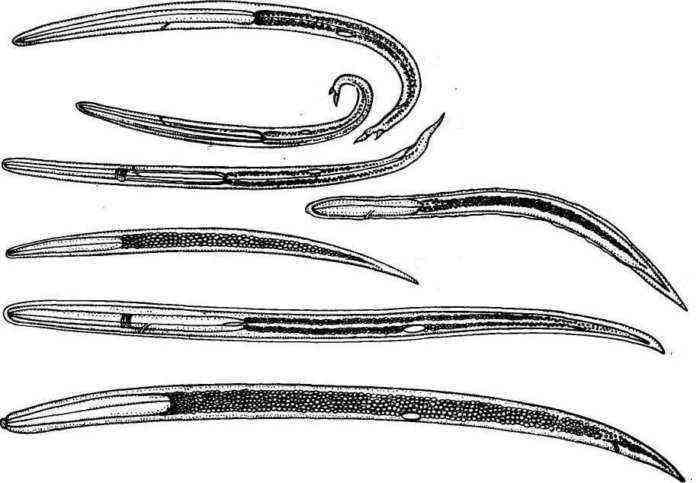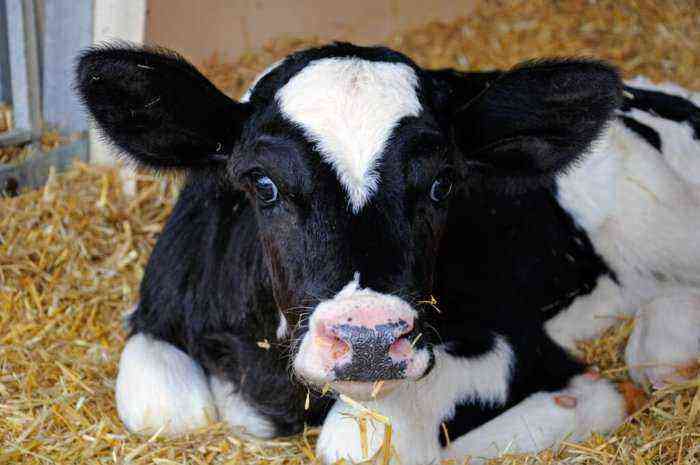When raising cattle, special attention should be paid to young animals, because it is on them that the further productivity of the herd and, accordingly, the economic benefit of the economy depends. Caring for this category of animals involves not only proper maintenance, feeding, but also protection from external negative factors, as a result of which various diseases of calves develop. They can cause a mass death of cattle, so any farmer should be able to identify signs of a particular disease and provide first aid to livestock.
sick calf
The main types of diseases in calves
To date, in veterinary medicine, there are several dozen diseases that occur in calves. Moreover, for ease of study, they are all divided into certain types. So, depending on the localization of the infection in the body, the following types of diseases are distinguished:
- Intestinal. Assume the defeat of the digestive tract in the offspring, as a result of which the function of the stomach and intestines is impaired.
- Respiratory. The infection causes inflammation and necrotic processes in the respiratory organs.
- Eye diseases. Manifested in lesions of the conjunctiva or cornea.
- Other diseases
Also, depending on the nature and method of spread of ailments that young cattle suffer from, they can be divided into:
- Non-contagious. Such diseases are not transmitted to other individuals, but in terms of their consequences they can be no less dangerous than invasive ones.
- Infectious. They have a viral nature or develop against the background of the activity of pathogenic microflora. Quickly spread to all livestock.
- Parasitic. The cause of the disease is various worms and other helminths that parasitize in the body.
Flatworms in calves
Non-communicable diseases
Most often, such diseases of newborn calves and older animals develop against the background of a lack of proper housing and feeding conditions. They are not transmitted to other members of the herd, but may well cause the death of young animals. Diagnosis and treatment of such ailments is complicated by the fact that they are similar in symptoms to many infectious diseases.
white muscle disease
Newborn calves are most susceptible to white muscle disease or myopathy. It develops against the background of metabolic disorders in the body. As a result, dystrophy, rapid exhaustion, damage to the heart and skeletal muscles can be traced. Mortality in the disease is more than 60%.
The clinical picture of the disease suggests:
- weakness;
- loss of appetite;
- rapid exhaustion;
- shallow breathing;
- pallor of mucous membranes.
Presumably, the disease occurs as a result of a deficiency in the body of selenium, vitamins and certain amino acids. Treatment is based on tocopherol, injections of selenium, trivitamin.
Rickets
Rickets develops in calves with a lack of vitamin D in the body. As a result, mineral metabolism in tissues is disturbed, which causes negative changes in the bone tissue of the skeleton. The joints are also affected, which is why the animal cannot move normally, often lies, and on palpation reacts sharply to touch.
calf rickets
Rickets is manifested by the following symptoms:
- lack of appetite;
- bowel problems;
- curvature of the limbs and other parts of the skeleton;
- unusual behavior of the baby (attempts to gnaw through the walls of the stall, lick the nearest animal).
Treatment consists of irradiating the calf with UV rays, introducing vitamin D into the body, feeding chalk, salt and bone meal. Prevention involves taking the same substances, but in smaller quantities.
Gastroenteritis
Such an ailment manifests itself in acute upset stomach and intestines, accompanied by severe diarrhea. It develops when using low-quality feed and milk. It can be traced with the wrong transition to other types of feed.
The clinical picture is manifested by prolonged diarrhea.
As a treatment, on the first day, young animals’ milk is replaced with salted warm water. On the second day, the ratio of salt water and milk is changed to 1:1. On the third day, 4 serving of water with salt is added to 1 servings of milk. To prevent dehydration and salt imbalance, the calf is fed 5-6 times a day. In parallel, as a fastening agent, the baby is given strong tea with salt (10% of the total volume of liquid) and chicken yolks.
bezoar disease
Such a disease involves the development of inflammatory processes in the abomasum. Most often it develops in the sucking and weaning period. The cause of the disease is small lumps of wool and coarse food fibers that settle in the abomasum, disrupting its work. If such a lump clogs the intestines, the animal dies.
Autopsy due to bezoar disease
Accompany the disease:
- exhaustion;
- weakness;
- fading of wool;
- bloating.
For medicinal purposes, the animal is administered drugs that improve the functioning of the digestive system. Also an effective measure is the introduction of mineral and vitamin supplements in food.
Tympany
Tympania (swelling) of the rumen in young cattle can be traced as a result of eating poor-quality feed, as well as during periods of a sharp transition to a new type of diet. Most often, it affects calves 2 months of age.
The disease is characterized by such manifestations:
- swelling of the left side;
- loss of appetite;
- hard breath.
Treatment is carried out by feeding the animal vegetable oil (150 g), as well as fresh milk (0,5 l). At the same time, they organize half-hour walks in an open area and massage the swollen area with a fist until the accumulated gas is completely released.
Prevention consists in observing the rules of livestock grazing and control over the quality of feed.
Calf in the pasture
Hernia
An umbilical hernia develops in small calves after an abnormal overgrowth of the umbilical cord. By itself, this phenomenon is practically harmless. But in the process of life of an animal, a hernia can be infringed, which causes a number of negative consequences:
- loss of appetite;
- lack of bowel movements for a long time;
- general oppression of the animal;
- severe pain in the area of the hernia.
If timely measures are not taken, such a disease develops into peritonitis and the baby dies. To prevent it, an urgent surgical operation is necessary.
Infectious diseases of calves
Attention! Diseases of an infectious nature are especially dangerous, as they quickly spread to all livestock. They can be of a viral nature or appear against the background of the development of pathogenic microflora in the body.
Accordingly, each of the types involves an individual course of treatment.
Colibacillosis (Escherichia coli)
Colibacillosis in calves develops in the first days of life. It is also called white diarrhea. Such a disease in an animal causes a special type of Escherichia coli. Due to severe diarrhea, the body of young animals is quickly depleted, which leads to its death within 3-5 days. Symptoms of the disease begin to appear on the third day. These include:
- decreased activity and general depression;
- loss of appetite;
- increased body temperature;
- light yellow feces with blood impurities.
Kastorovoe butter
The calf is treated by drinking strong tea and castor oil in large quantities. Special anticolibacillary serums, acidophilus also help. Since the disease can be accompanied by severe pain, the animal is prescribed a decoction of chamomile to treat them.
Cryptosporidiosis
The disease is caused by the entry into the digestive tract of an animal microorganism, which is called Cryptosporidiidae. Most often, invasion occurs when cattle are crowded in dirty barns. In this case, the pathogen is localized not only in the intestines, but also in the respiratory organs of the animal. The disease in more than half of the cases ends in death.
Clinical signs appear on the third day. The main ones are:
- weakening;
- decreased appetite;
- severe diarrhea;
- the calf constantly grinds its teeth.
The treatment course includes antibiotics and symptomatic treatment. Such an ailment does not imply a chronic nature.
Coronavirus enteritis
This disease develops due to the ingestion of a special virus. Affected calves at the age of one week. Infection occurs through contaminated food, milk, dishes, care items. Lethal outcome can be traced in 10-50% of cases. During the development of the infection, the mucous membranes of the intestines, stomach, and oral cavity are affected. Death comes from exhaustion.
Coronavirus
Symptoms:
- oppression and weakness;
- bloating;
- mouth ulcers;
- severe diarrhea with greenish stools.
Prevention is carried out by vaccination of newborn cattle. The fight against the disease is also based on the use of special serums and symptomatic treatment.
Paratyphoid
It is caused by Gertner’s wand, which enters the body from dirty dishes or with food. Most often, invasion occurs against the background of a primary disease in newborn calves. The result of infection is a disorder of the gastrointestinal tract. The lethal outcome is quite high.
The main symptoms include:
- decreased appetite;
- temperature rise to 41 degrees;
- weakness;
- rapid breathing;
- diarrhea.
The treatment is carried out by the introduction of anti-paratyphoid serum, in parallel with which the improvement of the conditions of detention and the quality of the feed is carried out.
Paratyphoid calf
Pasteurellosis
Pasteurellosis in cattle can occur in several different forms. It can also be acute or chronic. In acute cases, young animals die within 2 days. Often pasteurellosis causes the development of many secondary diseases in an animal. The manifestations of the disease include:
- cough;
- exhaustion;
- tearfulness;
- swelling of the joints;
- diarrhea;
- hemorrhage in the trachea.
The disease is extremely difficult to diagnose.
Anaerobic dysentery
Newborn calves are most susceptible to infection. Invasion is carried out through feeding and during childbirth. The death of a calf in the acute form can be recorded within a few hours after infection. The main symptoms of the disease are severe diarrhea and exhaustion of the body.
In addition to changes in the intestines, dysentery also causes pulmonary edema and liver dysfunction. If a disease is detected in one baby, all young animals of the same age are urgently vaccinated.
Parasitic diseases of calves
This type of disease develops as a result of the vital activity of helminths in the body. They can quickly spread throughout the entire livestock, and the products of the slaughter of such livestock in many cases are not subject to further use.
Skin gadfly
The skin gadfly is a special insect that can lay eggs under the skin of young cattle. After 4 days, larvae emerge from them, developing in the subcutaneous tissue during the cold period.
The appearance of the skin gadfly
The result of such parasitism are:
- rapid weight loss of animals;
- the likelihood of injury in an attempt to get rid of the larvae;
- the risk of infection through the resulting ulcers.
Treatment is carried out with special insecticides, which are prescribed and administered by a veterinarian.
Scabies
This disease in calves is caused by the scabies mite. This parasite penetrates under the skin of the animal, where in the course of its life it provokes inflammation and the release of toxins. The disease manifests itself with the following symptoms:
- hair loss on the affected areas of the skin;
- an increase in the temperature of the animal;
- the formation of cows at the places of penetration of the tick;
- the calf constantly tries to comb the inflamed skin.
The insect, multiplying, can spread to other individuals of the livestock, and also parasitize in human skin. Treatment is carried out by treating painful areas with special ointments.
Coccidiosis
The causative agent of coccidiosis is a special type of eimeria. They are localized in the intestines of the calf, where they get when grazing on swampy pastures. Also, young animals can become infected by drinking water from stagnant reservoirs, in which the parasite grows to a mature form. Within 21 days, the disease develops latently, after which it becomes acute. If the body is weakened, then an acute course may occur earlier.
Young animals can become infected by drinking water from standing water
The disease is characterized by such signs:
- lacrimation;
- general weakening and loss of appetite;
- severe diarrhea;
- temperature increase;
- the animal often grinds its teeth.
Affecting the body, such an infection causes the appearance of ulcers on the intestinal mucosa. Due to disruption of the gastrointestinal tract, a rapid exhaustion of the baby develops. Death usually occurs between days 2 and 14.
Effective preventive measures in the fight against coccidiosis are:
- careful selection of pastures for livestock grazing, which involves the exclusion of wetlands;
- feeding young animals with running water;
- separation of sick animals from the main herd;
- normalization of conditions for keeping cattle.
Treatment is carried out by ichthyol, thymol, drinking milk, in which a certain dose of ammonium sulphate is dissolved. The room in which the infected animal was kept or walked is carefully treated with hot lye.
Dictioaculosis
The disease is caused by a parasite belonging to the species Dictyocaulus. Such a helminth enters the intestines, from there it enters the bloodstream and moves to the lungs. In the lungs and bronchi, the worm is fixed, begins to feed on the tissues of the respiratory organs and multiply. This causes the empty spaces in the trachea to fill with lumps of mucus, leading to emaciation of the animal and death by suffocation.
Dictyocaulus
Also, dictyocaulosis is dangerous because parasites can introduce secondary pathogenic microflora into the body. The disease manifests itself with such symptoms:
- cough that gradually gets worse;
- hard breath;
- discharge from the nasal cavity;
- cardiopalmus;
- the animal constantly grinds its teeth;
- general depression and weakening of the body develops.
Dictyocaulosis is treated by injecting iodine solution into the lungs. If a secondary disease has already developed, it is first treated, and then deworming is already carried out.
Conclusion
Young animals experience any diseases of cattle much more acutely than adults. Therefore, it is necessary to take measures to eliminate it as soon as possible. And for this, every livestock owner must be able to quickly recognize the signs of illness and provide the animal with appropriate assistance.


